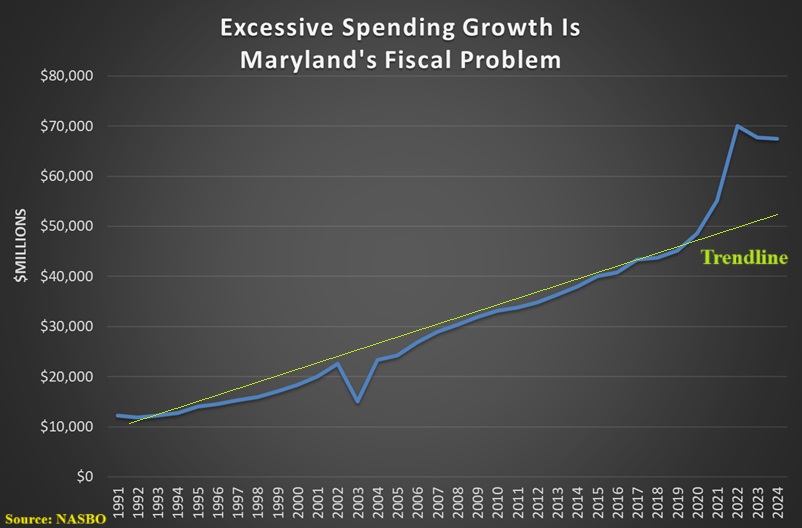Since it was unveiled last September, I’ve cited three examples,Colombia, France, and Brazil, of my 20th Theorem of Government:
Whenever there is fiscal deterioration, excess spending growth is the cause. Whenever there is fiscal improvement, spending restraint is the cause.
You’ll notice, however, that the Theorem is not limited to countries. That’s because local and regional politicians are just as capable of profligacy as national politicians. Today’s column is going to look at what’s happening in Maryland, where the state’s governor wants a big class-warfare tax increase.
Here are some excerpts from a report in the Washington Post by Katie Shepherd, Katie Mettler, and Erin Cox.
Maryland Gov. Wes Moore (D) on Tuesday announced a plan to raise income tax rates for the state’s wealthiest residents, money that would help close a looming $3 billion budget deficit… Moore has pledged making $2 billion in cuts to help close the budget gap, targeting some spending on climate initiatives and government inefficiency. …The tax plan comes as state leaders grapple with a massive deficit that has outpaced those seen during the Great Recession and is projected to grow to nearly $6 billion by 2030. …“Anyone who thinks you can just cut your way to prosperity isn’t being serious,” Moore said at a breakfast with lawmakers Tuesday morning. …Progressive advocacy groups and some liberal-leaning local officials have encouraged state leaders for more than a year to help fix the state’s finances by taxing the rich.
The article is informative and it even quotes a few Maryland Republicans for balance. But it doesn’t provide enough data for readers to assess whether a big tax increase is reasonable or unreasonable. Why is there a “massive deficit” that “is projected to grow to nearly $6 billion”?
To answer that question, I went to the database maintained by the National Association of State Budget Officers to see what actually happened to state spending over the past few decades.
Lo and behold, it turns out that the 20th Theorem fully applies. As the chart shows, Maryland’s current fiscal mess is entirely because spending spiked during the pandemic and has not returned to the pre-pandemic trendline.
By the way, spending was growing too fast even before the pandemic, rising by about 6 percent annually. That’s well above population plus inflation.
But let’s ignore that problem and focus on the fact that the state has big deficits today solely because Maryland politicians want to use a temporary emergency as an excuse for a permanent increase in the burden of government spending.
P.S. For all intents and purposes, the spending-above-trendline problem in Maryland is the same as the problem for both the United States and the United Kingdom. Sadly, Governor Moore is doing exactly what Joe Biden wanted to do and what Keir Starmer is trying to do.

No comments:
Post a Comment